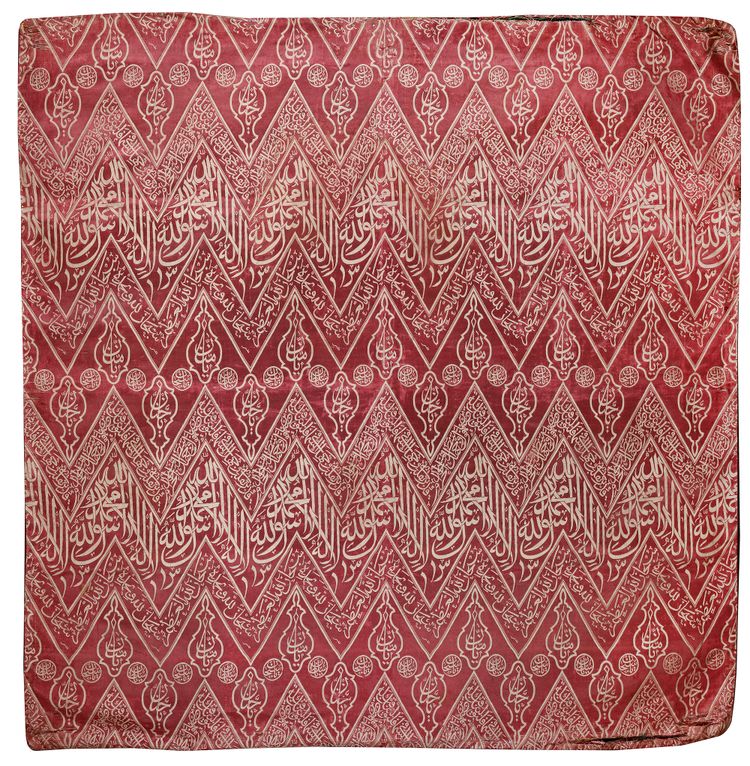A RED EMBROIDERED SILK KISWA, OTTOMAN, 17TH CENTURY
A fragment of the inner curtain of sacred kiswa for the inner wall of the Kabaa with an inscribed weave in cream-colored silk over a dark red ground. The crests of the chevrons are embellished with lamp motifs with circular medallions in between. Embellished with two groups of three undulating bands which assume the form of a continuous chain made up of number ‘7’s. The bands run from the beginning to the end of the cloth. The central band with prominent Inscription of ‘Kalimaat al-Tawhid, There is no God but Allah and Muhammad is his Prophet’, repeating in the middle of the kiswa between the two zigzag bands. The two expressions, ‘Ya Mannan’ (O, the All-Bounteous) inside the upright lantern, and ‘Ya Hannan’ (O, the Most-Compassionate) inside the reversed lantern are also repeated with ‘Praise be to Allah’ (O, The All-sovereign) inside the circles. On the upper undulating band, there is a verse from the Quran 2 surah Al-Baqarah verse-144. The lower undulating band encloses another inscription of ‘I gratefully declare and believe Allah to be devoid of any deficiencies, I declare and believe the Omnipotent Allah is free of every defect’. 125 by 125 cm.
CATALOGUE NOTE Bearing testimony to the importance of textiles in Ottoman society, examples such as the present silk textile, with a chevron pattern incorporating the Shahadah, or declaration of faith, would have been made as special commissions, particularly during the Ottoman dynasty’s rule over Medina (1517–1916 AD) when it was custom to send such textiles to adorn the Kaaba in Mecca and replaced yearly. It is worth mentioning that once used to cover the Kaaba, the inner kiswa was cut into small pieces and sent as gifts to different capitals and cities in the Islamic world to bestow blessing on them. Ruling palaces and councils contained pieces of the kiswa, which were used to confer legality and sanctity. Fragments with the same loom pattern are in the Victoria and Albert Museum, London, the Textile Museum, Washington, The Metropolitan museum in New York and The David Collection, Copenhagen.
PROVENANCE Private collection, United Kingdom

